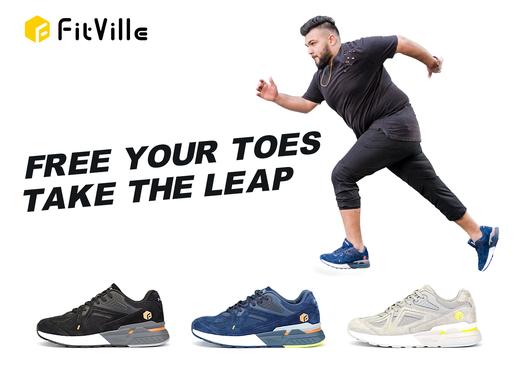Choose Your Walking Shoes Wisely

Walking shoes that are comfortable and fit your feet can help prevent injuries and various foot problems. A decent walking shoe should be fairly weighted with good shock absorption. Elasticity and resilience will consolidate the grips and relieve your fatigue from a long walk.
Shoe Structure
How a shoe is built would make a difference in its fitness and function. Let's break them down for a detailed look:
- Heel collar - Cushions the ankle and ensures a comfortable fit.
- Upper portion - Holds the shoe on your foot and is usually made of leather, mesh, or synthetic material. Mesh allows better ventilation and is lighter weight, synthetic material gives a stylish look and also fits the vegans
- Insole. Cushions and supports your foot and arch. Removable insoles can be laundered or taken out to dry between walking sessions.
- Outsole - Makes contact with the ground. Grooves and treads can help maintain traction.
- Toe box - Provides space for the toes. A roomy and round toe box helps prevent calluses.
- Achilles tendon protector - reduces stress on the Achilles tendon by locking the shoe around the heel.
Check the shape of your feet
Feet come in many shapes and sizes. To avoid painful problems, consider the shape and size of your feet when buying a pair of walking shoes. Your feet should never be forced to conform to the shape of a pair of shoes.
Width and length
Shoes that are too narrow or too wide can lead to painful blisters and calluses. Remember this: a toe box and enough room for your toes — offer a first-class experience for your walking shoes.
Arch type
The intricate alignment of bones, muscles, ligaments, and tendons in your feet form the width and length of your arches. As you walk, these springy, flexible arches help distribute your body weight evenly across your feet. Your arches play an important role in how you adapt to various surfaces as you walk.
It is advisable to choose walking shoes that accommodate your arch type. Comfortable shoes with good arch support ensure safety walking in your steps.
Replace the worn-out shoes
All walking shoes eventually show signs of wear. And even if they still feel comfortable and don't show much outerwear, they might not be providing enough support or shock absorption.
Change the shoes when:
- The outsole is worn
- After 300 miles of running or walking in your current pair
Even if a shoe looks good, most lose their impact protection after around 300 to 350 miles. Put a mark on the calendar when you've reached your shoes' maximum mileage to remind yourself to replace them and to track how long it typically takes you to put in 300 miles.
Get Yours - FitVille Rebound Core
Wide Toe Cap and High Instep to Offer Top Class Experience
Patented Sole Design to Provide Cushioning & Elasticity
Shock Absorbing Pad to Help Alleviate Heel Pain
Heel Ring to Reduce Overpronation & Prevent Spraining
Anti-Skid Rubber to Ensure Your Safer Walk
About FitVille Footwear
Just Follow us on LinkedIn, Facebook, YouTube, Instagram, RSS feed and Pinterest to catch our brand news.
What FitViller Prefers
Best Shoes to Buy

Popular Men's Shoes

Popular Women's Shoes
































